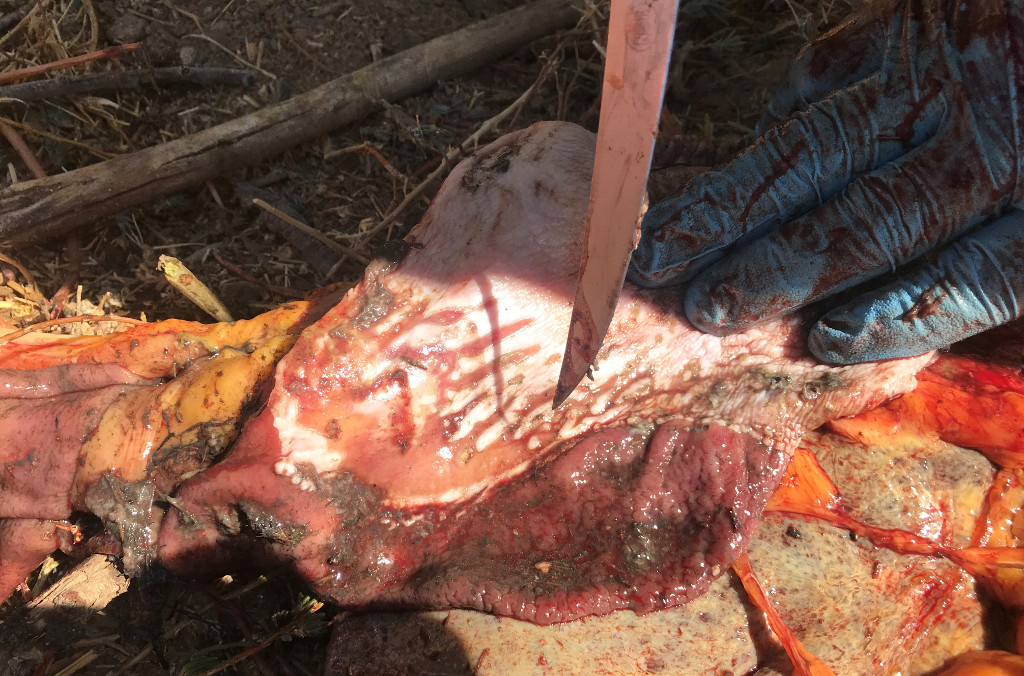Suspect Chillagoe disease in horses
Unusual presentation:
Neurological signs and multiple mortalities of horses.


Above: Reddening of the mucosa with erosions and areas of thickening
Time and location: October 2019, Barcoo region of Queensland.
Case definition: Horses with neurological signs: three recently dead horses found at muster, the fourth remaining horse ataxic and in poor condition.
Gross findings: The sick horse was an Australian Stockhorse mare, about 10 years old, with a Body Condition Score of 1.5 (out of 5). She was euthanised with a gunshot to the atlanto–axial joint to preserve the brain (thrashing and unpredictable behaviour meant that IV injection was not a safe option). The mesentery, abdominal fat and liver were diffusely jaundiced. Other organs appeared normal. The contents of the stomach and small intestine were metallic black and had a watery consistency. The stomach wall was reddened with several areas of erosion/ulceration in the non–glandular portion of the stomach. Samples submitted included: bloods (EDTA, heparin and clotted); fresh and fixed tissues (brain, liver, kidney, stomach, oesophagus, small intestine, caecum); gastrointestinal contents and faeces.
The differential diagnoses were: heavy metal toxicity (lead); Birdsville Disease/Pyrrolizidine toxicity/other plant toxicities; algae/fungal toxins; Equine Viral Arteritis; viral encephalitis; and bacterial encephalitis.
Laboratory findings: Ulcerative oesophagitis. Foci of mucosal thickening and prominent rete pegs suggests chronic, ongoing injury. Hepatocytes are moderately swollen. There are numerous type II astrocytes (usually associated with hyperammonaemia in horses). No histological evidence of viral encephalitis. Negative for Hendra virus and blood levels of lead in the expected range. No significant histopathology detected in kidney, spleen lung or heart. Ulcerative oesophagitis is a typical finding in cases of Chillagoe horse disease – following the consumption of large amounts of Crotalaria species.
Animal / management / environment risk factors: Geographical location. Toxic plant seeds can spread during floods, with new growth being seen in areas previously not infested.
There are 33 species of Crotalaria known in Queensland, most of which are toxic to livestock. All Crotalaria should be treated as potentially lethal. They predominantly cause pyrrolizidine alkaloid poisoning but are also responsible for Kimberley horse disease (walkabout disease) and Chillagoe horse poisoning (oesophageal ulceration of horses). The species associated with Chillagoe horse poisoning are C aridicola (Chillagoe horse poison) and C medicaginea (trefoil rattlepod). These plants were not observed at the time of the disease investigation but the new station owners were asked to walk the horse paddock in search of Crotalaria plants and send photos for confirmation.
Recommendations to the producer: Fence off high risk areas (river banks and flood out country), or move all horses to a new paddock free of Crotalaria species.
